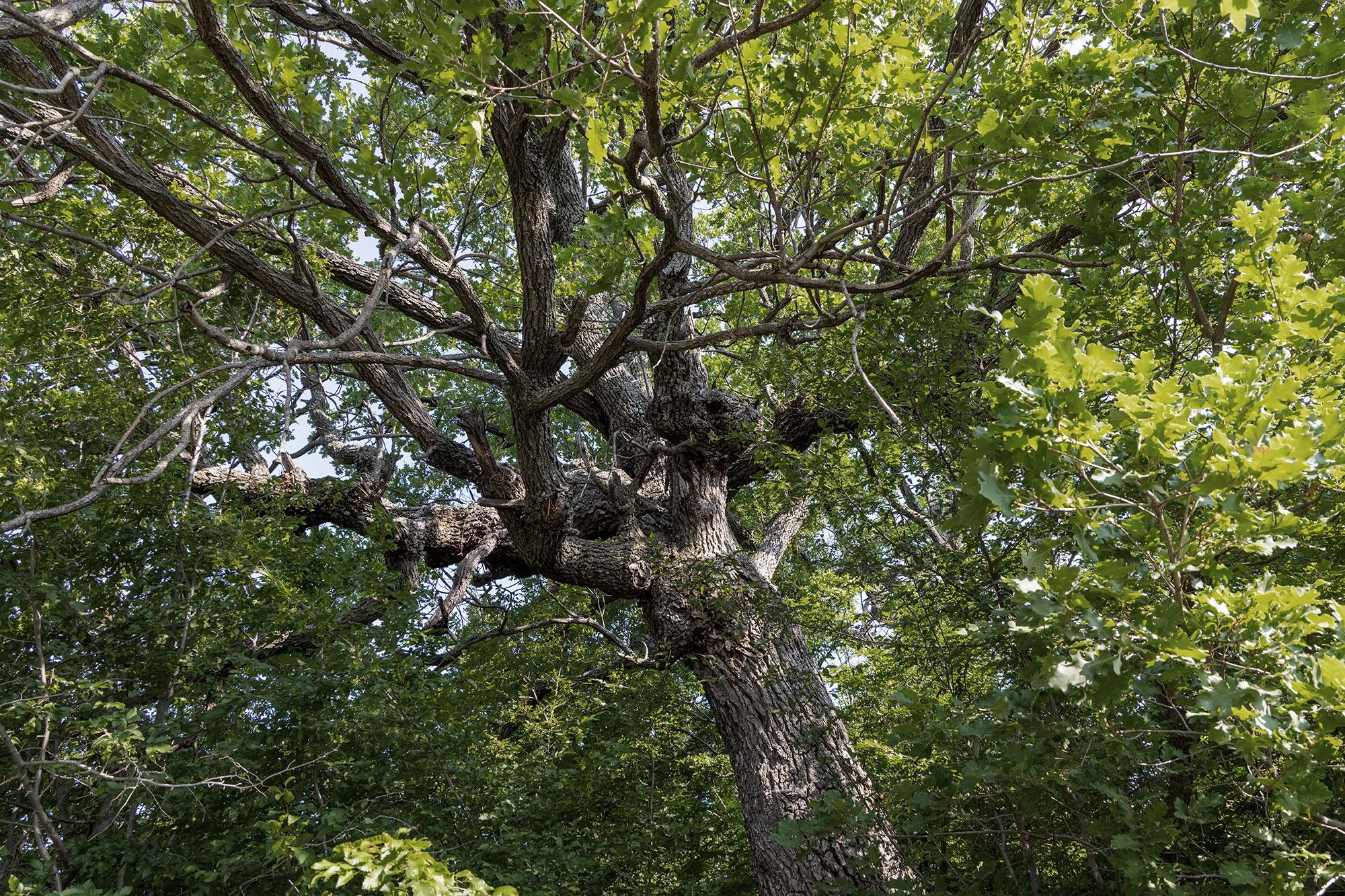Should we rely on other tree species to adapt to global warming?

Pubescent oak trees thrive even at higher temperatures, in part because they are active earlier in the year. Researchers supported by the SNSF put the trees of the future to the test.
As trees grow, they absorb ever greater amounts of CO2 from the atmosphere. Consequently, the health of trees both determines climate and is determined by it. During heatwaves and droughts, trees stop growing and almost entirely stop absorbing carbon. And because carbon is responsible for the increase in extreme weather events, the result is a vicious circle. Certain tree species, however, are largely able to compensate this effect: milder springs promote earlier “leafing out”, which length-ens the period of growth during which trees metabolise CO2.
A team of researchers supported by the SNSF compared the resilience of two species: common beech and pubescent oak. Common beech is ubiquitous in Swiss forests. Pubescent oak is less common in Switzerland, but becomes more abundant the closer to the Mediterranean you go. Not surprisingly, the more southern of the two species benefits more from higher temperatures. At 5 degrees Celsius above the current average temperature, pubescent oak buds a month in advance and leaf fall occurs a few days later. This extended vegetation period is enough to compensate dormant periods during summer heatwaves and droughts. In fact, the oaks grow as much and take up as much CO2 as under current climatic conditions.
Bad times for beech
Common beech is less resilient. Still at a temperature increase of 5 degrees Celsius, beech begins to bud just a few days early. Ultimately, under hotter conditions the trees languish and absorb less carbon from the atmosphere, exacerbating climate change. These observations show that beech trees will inevitably suffer from warming, says Charlotte Grossiord, lead author of the study and a professor at EPF Lausanne. On the other hand, more Mediterranean species could have an advantage in Switzerland. “Our work aims at helping forest managers consider which species to favour,” says Grossiord. “We continue to plant beech, the signature species of Swiss forests, but it may not be the best investment for the future.”
In reaching their conclusions, researchers at EPF Lausanne and at the Swiss Federal Institute for Forest, Snow and Landscape Research (WSL) grew both tree species in climate-controlled greenhouses at a WSL site. Sixteen hexagonal chambers were equipped with heaters to mimic various climatic conditions. The team subjected one group of trees to higher temperatures, a second to summer drought and a third to both conditions. A fourth control group, exposed to current climatic conditions, served as a reference. For two years, the researchers measured a series of parameters from the seasonal cycle to height and diameter growth, as well as photosynthetic activity and leaf surface.
As a next step, Grossiord would like to study the resilience of other species. “We started with oak and beech because we have a lot of information about them. But many Swiss species are interesting, especially softwoods.”